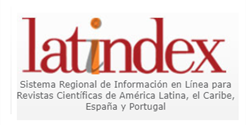MODEL OF DIDACTIC STRATEGIES AIMED AT THE OPTIMIZATION OF ICT IN THE INTERNATIONAL BUSINESS ADMINISTRATION PROGRAM OF UNIREMINGTON CÚCUTA
DOI:
https://doi.org/10.56219/dialctica.v2i26.4703Keywords:
Didactic strategies, Inquiry-based learning, Challenge-based learning, Case method, Blackboard Collaborate platformAbstract
The article consists of the design of a document that contains didactic strategies or courses of action that have been suggested to achieve the optimization of technological resources supported by ICT (Information and Communication Technologies) in the professional area of Business Administration. International of the Uniremington University Corporation Ct Cúcuta. The main objective was to design content for educational action courses aimed at taking advantage of the ICT available in the International Business Administration program of the Uniremington University Corporation Ct Cúcuta. The objective seeks to achieve optimal use of the ICT installed or to be installed in the institution, applying the respective teaching strategies or courses of action to follow and the optimal use of ICT through the technological means that are installed in the institution to compliance with the learning process and the academic and training objectives established by the university.Such didactic strategies or courses of action to be followed are: a. Optimal use of the academic q10 platform in the Case Method b. Leveraging chat on the q10 platform applied to Inquiry-based learning c. Research-based learning through the scheduling of videoconference forums supported by the Blackboard Collaborate platform d. Problem-based learning supported by consultation in the Uniremington Virtual Library Cúcuta e." Challenge based Learning" or Challenge-based learning Keywords: Didactic strategies, Inquiry-based learning, Challenge-based learning, Case method, Blackboard Collaborate platform,
Downloads
References
Barberá, J. & Fuentes, M. (2012). Aprender inteligencia emocional mediante formación online ¿es posible? Revista Profesorado. 15(2: 18-29
Belloch, C. (s.f). Las tecnologías de la Información y comunicación (Tic) en el aprendizaje. Valencia: Universidad de Valencia.
Castro, Santiago; Guzmán, Belkys; Casado, Dayanara. Las Tic en los procesos de enseñanza y aprendizaje Laurus, vol. 13, núm. 23, 2007, pp. 213-234 Universidad Pedagógica Experimental Libertador Caracas, Venezuela.
Cipagauta, (2023). TIC en el aula: caso de estudio Colombia. March 2023TECHNO REVIEW International Technology Science and Society Review /Revista Internacional de Tecnología Ciencia y Sociedad 13(1):27-47 DOI:10.37467/revtechno.v13.4808
Gabelas, J. (2002). Las TIC en la educación. Una perspectiva desmitificadora y práctica sobre los entornos de aprendizaje generados por las nuevas tecnologías.UOC.
Iriarte, F. (2013). Proyecto de investigación: Diseño de un espacio virtual con recursos tecnológicos para el desarrollo de competencias TIC en la educación superior. Ciencia a tu alcance. Universidad del Norte. Barranquilla. Colombia.
Islas C. (2017). La implicación de las TIC en la educación: Alcances, Limitaciones y Prospectiva. RIDE. Revista Iberoamericana para la Investigación y el Desarrollo Educativo. versión On-line ISSN 2007-7467.Scielo.
Hernández, R.M... (2017). Impacto de las TIC en la educación: Retos y Perspectivas. Propósitos y Representaciones, 5(1), 325 - 347 http://dx.doi.org/10.20511/pyr2017.v5n1.149.
López, J. (2013). Inclusión de recursos tecnológicos como medios facilitadores en el fortalecimiento de los aprendizajes esperados del bloque 2 de Historia en 6º. Introducción. México: Universidad Interamericana para el Desarrollo.
. Ortiz, A., Peñaherrera, M., & Ortega, J. (2012). Edutec. Revista Electrónica de Tecnología Educativa. Universidad de Jaén. España.
Downloads
Published
How to Cite
Issue
Section
License

This work is licensed under a Creative Commons Attribution-NonCommercial-ShareAlike 4.0 International License.
La revista Dialéctica conserva los derechos patrimoniales (copyright) de las obras publicadas, que favorece y permite la reutilización de los mismos bajo la licencia Creative Commons Atribución-NoComercial-CompartirIgual 4.0 , por lo cual se pueden copiar, usar, difundir, transmitir y exponer públicamente, siempre que se cite la autoría y fuente original de su publicación (revista, editorial, URL y DOI de la obra), no se usen para fines comerciales u onerosos y se mencione la existencia y especificaciones de esta licencia de uso. Si remezcla, transforma o crea a partir del material, debe distribuir su contribución bajo la misma licencia del original.











